7 Ways To Upgrade Your Content Gap Analysis For SEO Success
With an estimated 8.5 billion searches on Google every day, creating content that ranks highly in SERP results is crucial.
In a competitive era of online marketing, brand visibility is the difference between widespread engagement and a strategy that falls flat.
Although it can be an intimidating task, engaging in a regular content gap analysis is the key to creating these opportunities for brand visibility. By scouring the web, social pages, and competitor content, you can identify which areas of your content strategy build up your brand and which areas harm your online SEO.
The question is, how can you upgrade your content gap analysis to improve your success rate? While we’re familiar with keyword searching and competitor analysis, there are many other ways to source content gaps as an SEO professional.
With this in mind, this guide will teach you how to transform your content gap analysis process and reveal seven ways to upgrade your strategy to uncover ongoing content opportunities with ease.
The Problem With A Traditional Competitive Content Gap Analysis
While competitive content analysis remains one of the most effective ways to identify gaps within your industry, prioritizing this process alone can present some drawbacks for your brand.
It’s a dangerous game to define your brand voice as a shadow of your closest competitor. If your competition sees great engagement following a specific content format, topic or product release, following in their steps with a ‘revised’ version of their success story could drive your target audience in the wrong direction.
Conducting a powerful content gap analysis starts with your own brand, not your competition. The key to identifying new opportunities for content marketing is to look closely at your current content, audience, and growth data to highlight gaps for improvement.
Leveraging insights from your buyer funnel, brand mentions, and target lead surveys are just a few ways you can upgrade your analysis approach.
The critical thing to remember here is that you’re not your competitor. You have different goals, resources, and topical authority to tackle, especially if you plan to become an opinion leader in your industry.
7 Ways To Upgrade Your Content Gap Analysis To Discover New SEO Opportunities
Identify Your Failed Marketing Goals
Every content marketing strategy is formed with goals in mind. Following a clear set of KPIs quantified within an achievable timeframe is the key to maintaining a healthy content output that follows a clear direction.
With your goals laid out in front of you, first, take a look at them and identify any KPIs that have not been achieved with your current content marketing strategy. This may indicate that there are potential gaps that need closing.
For example, if your goal is to secure 100 marketing-qualified leads every month, but you’re constantly falling short, it could be time to look at your on-page traffic on multiple landing pages and compare these with your lead numbers.
Going further than that, take a look at the low-performing piece of content itself.
- What percentage of visitors complete your desired action on-page?
- Are they downloading your asset or clicking on your embedded links?
Here you’ll gain insights into the number of active and passive consumers interacting with your content.
Asking yourself the bigger questions first can help you identify any anomalies within your strategy, enabling you to reimagine more targeted content goals for your brand.
Use Google Search Console To Identify Underperforming Content
If you’re able to find low-performing content at speed, you can spend more time filling the gaps.
Using Google Search Console (GSC) or Nightwatch, you can identify pages on your own website that have seen the highest dip in user visits over the last day, week, month, or more.
Google Search Console highlights pages that once received a high influx of visitors but have recently gone stagnant. This is because the recent drop in performance indicates that the content was once helpful to your targets but has now become less valuable.
This often means that there are gaps to be found and filled to create content that is more engaging for your targets.
To begin, open GSC and select “Search results” in the left-hand menu.
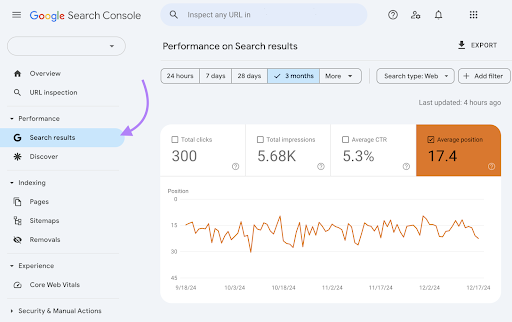
Then, click “More” > “Compare.” This will present you with a scroll-down list of timeframes to select from the last three months, which can be used to compare content performance levels.
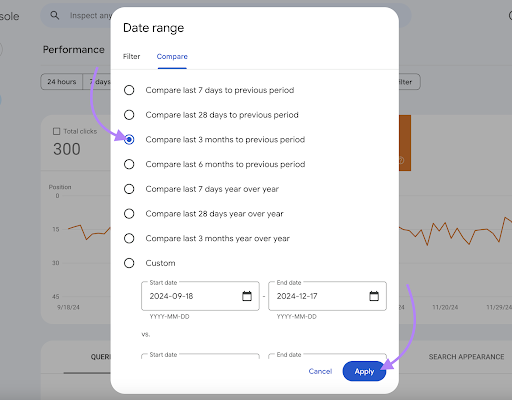
Once you’ve selected your timeframe for comparison, scroll down to the table and click “Pages.”
This will present your top-performing pages and their shifts in impressions over the chosen period.
Highlight any pages with a notable decrease in clicks and impressions. Once you’ve selected a page, take a look at the content and the keywords you’re currently ranking for using the Keyword Gap tool and compare them to the top-ranking content for those phrases.
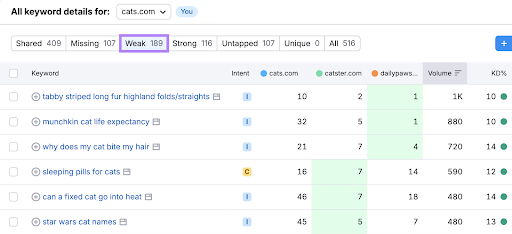
The weakest keywords you rank for are often non-starters; instead, focus on keywords that you rank for on the second or third page in the SERPs.
Use this opportunity to update the content surrounding these keywords to fill in any gaps. This will give you the best chance of outranking your competitors in a search result.
Filter Your Content Gap List by Topic Authority
You can also filter and sort your content gap list by topic authority to easily identify your top contenders for future content themes.
When creating content, it’s important to build your strategy from a position of strength. If you already have some authority in one topic area, you’re more likely to see a spike in engagement when creating new content around similar topics.
Using tools like MarketMuse, you can sort your list of low-ranking content via topical authority to access the best content candidates worth regenerating.
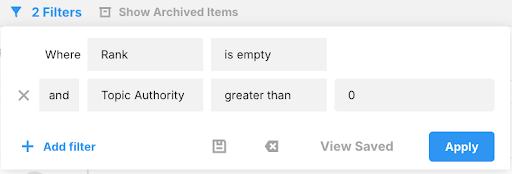
By adding topic authority filters, you quickly cut your list of topics in half, leaving only the most lucrative opportunities for SEO growth.

Tools such as MarketMuse, which filter for topic authority, are brilliant assets to leverage when completing a content gap analysis. It eliminates candidates with a disadvantage to begin with, to ensure that you’re not wasting your time on content themes with low-ranking potential for your brand.
Highlight Content Gaps Using Brand Mentions
When conducting a content gap analysis, leveraging social listening is a real game changer.
Social listening is the process of auditing audience conversations surrounding your brand. These could be brand mentions, content comments, and even topical discussions about your industry amongst your target demographic.
“Use social listening tools to track conversations around topics related to your industry or niche,” says Ghazaleh Abolfathi, Campaign Manager at Digikala. “This can help you identify popular topics your audience is interested in and create content that resonates with them.”
Tracking your brand mentions, in particular, could significantly enhance the effectiveness of a content gap analysis. Using a tool like Mention or Meltwater, you can track these conversations surrounding your brand and analyze your audience’s sentiment as they discuss your content.
![]()
(Image Source: Mention)
Most social listening tools allow you to create a specific alert for target keywords related to your brand. This allows you to stay on top of multiple mentions on different social platforms at once.
With the ability to leverage insights from vocalized pain points resting to your brand and its content, you can identify any gaps that need filling.
Take Nike, for instance. To discover content gaps in its own market, the footwear brand has since created a Twitter/X page dedicated to listening to brand mentions.
Acting as a customer support page, Nike provides its consumers with a chance to challenge the brand, offer new ideas for products, and raise any concerns surrounding Nike’s content.
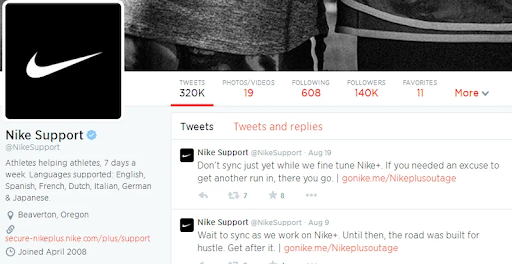
(Image Source: Nike Support/X)
These comments and mentions can then be turned into new content topic ideas that attract targets in the same demographic.
Listening to your audience’s sentiments is the key to creating relevant, helpful content that performs well on multiple platforms.
Streamline Content Regeneration Using AI
To best manage your time, update old content rather than create new content to fill your topical gaps.
If you evaluate your page’s current keyword rankings and find that the content is still performing well for relevant keywords, you have a chance to update and optimize this page to help it place even better in the SERPs.
If there are new keywords and phrases relating to your well-ranking content gaining traction amongst your competitors, now is the time to add these to your well-performing content for a chance to appear in multiple related searches.
Content posting tool Buffer did just this during their ‘No New Content’ challenge in 2015. In a bid to prove that content gaps can be addressed within your live blog posts to boost on-site engagement, they committed to only re-inventing their live blog content to address new engagement-driving topics.
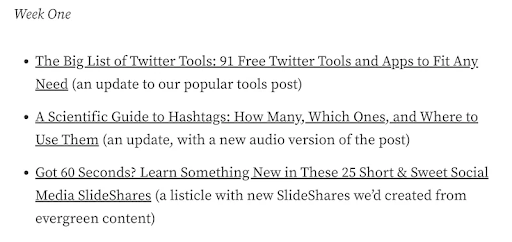
(Image Source: Buffer)
On the back of the experiment, their organic search traffic increased by 4%.
Whether you plan to repurpose social content, harvest new topic ideas from trending keywords or turn long-form blog posts into easy-to-digest listicles, there are plenty of ways to re-invent your live content to fill gaps.
Better still, the emergence of AI content tools such as ChatGPT makes reimagining your current content even easier:
- Use ChatGPT for Blogging: ChatGPT is a brilliant tool to leverage when updating your blog posts. Not only can it help marketers generate updated topic ideas based on your target keyword, but it can also suggest semantically related keywords to include in your current content to boost engagement.
- Use Copy.ai To Analyze Your Readability: Content readability is crucial in a competitive search sector. Using platforms such as Copy.ai to double-check grammar, score your legibility and suggest user-experience-driven edits is the best way to ensure that your content is consumed by as many viewers as possible.
- Use Jasper To Personalise Your Visual Content: As you update your content, use Jasper to re-invent your live visuals by removing and updating backgrounds and editing visual focus and placement to accompany the new topics you’re covering.
- Use NightOwl to Optimize Content for SEO: NightOwl makes content optimization effortless. Just prompt the AI agent with your target keyword or URL, and it delivers detailed SEO insights in seconds. It pinpoints missing keywords, suggests internal links and meta tag improvements, and helps you refine your content for stronger search performance.
While AI content tools can be a helpful aid to leverage as a content marketer, remember that in order to rank highly on Google, all content should be original and human-generated. Use these tools to enhance the ideation process before editing to ensure that the content meets your brand’s quality standards.
Address Funnel Gaps
Another area often not addressed in a content gap audit is funnel gaps. Content funnel gaps exist when a brand spends too much time attracting new visitors with their content rather than creating content that guides a lead through all stages of the buyer journey.
In a buyer funnel, there are three stages to consider. These are awareness, consideration, and decision.
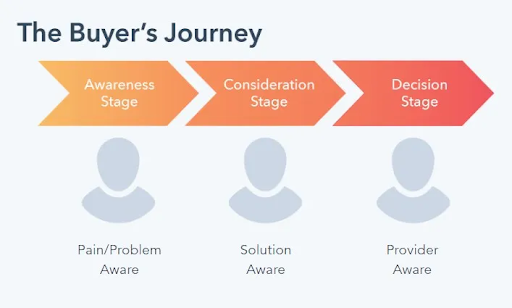
(Image Source: Hubspot)
When analyzing your content gaps, look out for patterns in buyer bounce rates. Where are you losing your leads along the funnel?
Once you’ve pinpointed an area where you lose customer interest, it’s time to fill the content gaps. For example, if you see engagement dips during the consideration stage, create more content that aims to encourage leads to make a purchase decision.
This could be an email-format exclusive offer with a clear call to action or a social platform video demonstrating how the product in question can be used to solve target pain points.
The key here is to create content according to each stage of the buyer journey, which can help guide leads through the funnel more effectively.
Ask Your Audience Directly
Last but not least, one of the easiest ways to upgrade your content gap analysis is to get your audience involved.
In 2025, it’s never been easier to conduct a survey online. Whether you choose to email your recent buyers with a questionnaire or take to social media to ask for your audience’s opinion, leveraging insights from your content targets is the key to discovering powerful content gaps.
In order to reach as many people as possible, first consider the platforms your demographic is most likely to be active on. For example, if you’re generating the most engagement on TikTok, create a video that directly prompts viewers to reply with answers in the comments.
However, if you have more loyal followers on Instagram, an Instagram story is more likely to generate replies.
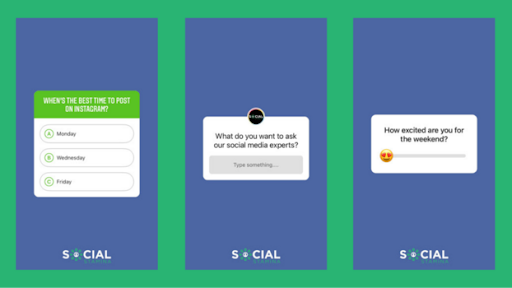
(Image Source: Social Stamina)
“The longer someone is in our audience, the greater the chance that their needs and wants have changed,” claims serial entrepreneur Rachel Gogos.
“When you take the time to ask your customers, clients, and followers about what they want or need, it might spark all kinds of new things you can create or write about. It might also let you know that your current content is right on the money, and you don’t need to change a thing.”
Asking your audience directly is a foolproof approach to a content gap audit. Getting your target market involved ensures that your new content appeals to followers who are already engaged and loyal to your brand, as well as any new acquisitions.
It’s Time To Fill In Your Content Gaps
We know that creating quality content is crucial for business growth in the digital age. The question is, how can we ensure that we’re feeding our demographic what they want?
In 2025, the key to achieving content marketing success is to address your strategy from the ground up. Identify gaps within your live content and find ways to connect with your audience to gauge their sentiment.
Powerful content comes from a business that knows its target market well. Staying on top of the search landscape and remaining close to competitor tactics is the key to piquing your viewer’s interests and keeping them engaged in 2025.
The good news? Tools like NightOwl make it easy to stay ahead. With a quick audit, you can spot content gaps and uncover the insights needed to sharpen your strategy—no manual grind required.
Register now and take control of your SEO visibility.
Rebecca Barnatt-Smith is a content manager at Solvid, specialising in marketing strategy, digital trends, and emerging tech.
